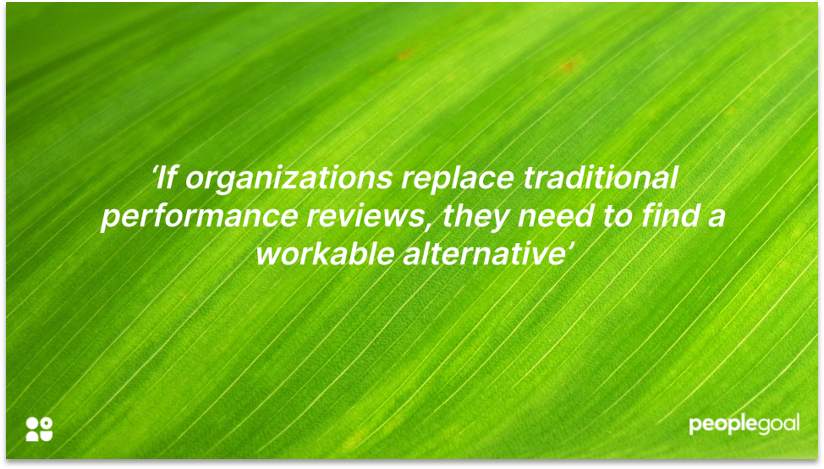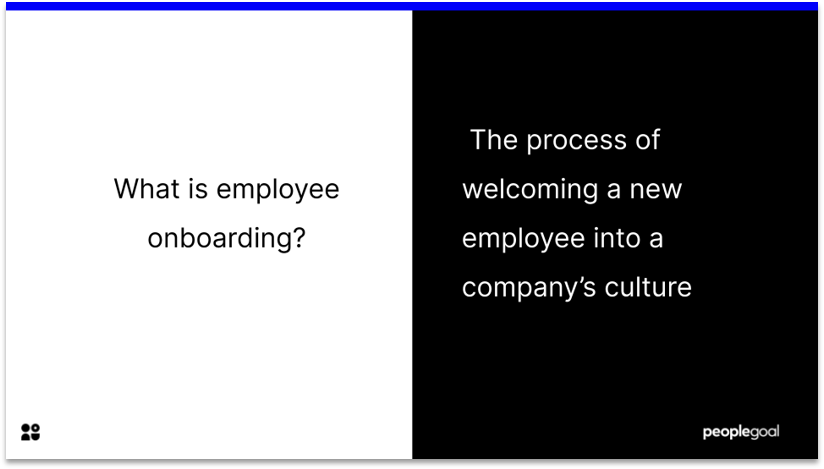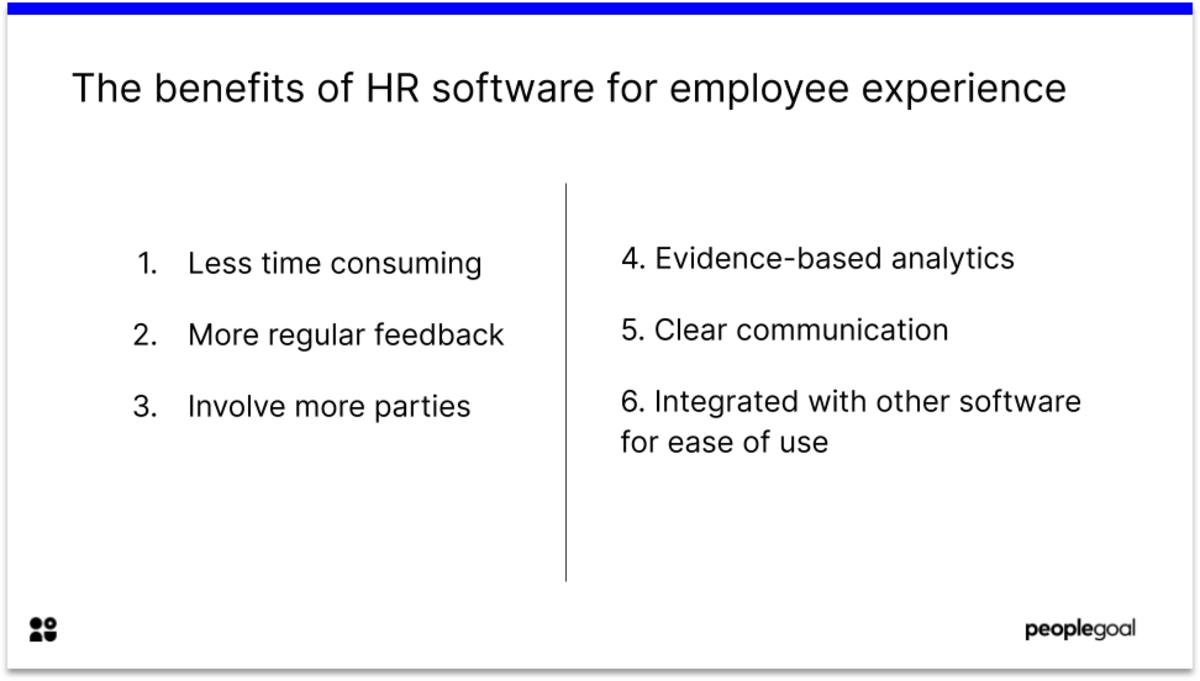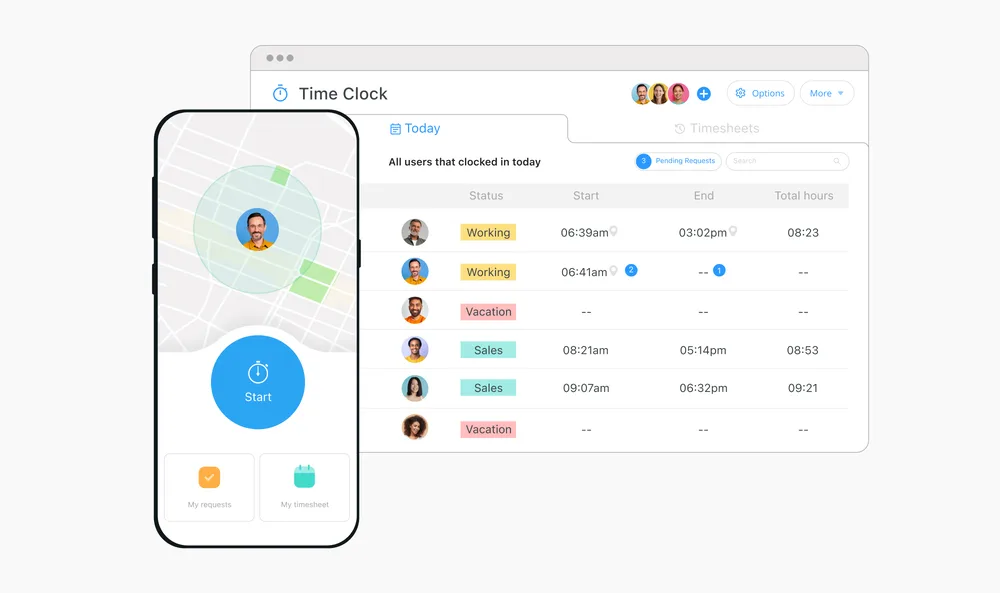What is an employee onboarding process?
Onboarding a new employee has been described as "a process by which new hires are emotionally, physically and professionally integrated into the established culture and operations of their new employer". A common mistake is the belief that the onboarding process begins on the first day of a new hire. In reality the onboarding process is an ongoing process that begins in the recruitment phase.
It is essential for businesses to start onboarding before their new employee joins the company in order to minimize the ramp-up time and prevent negative productivity from day one. The onboarding process should start when the job offer is accepted by an applicant and should be approached as a continuous process during the first few months of their employment.
Why does the onboarding process matter?
In 2017, a survey found that 79% of managers feel that it is important for new employees to effectively engage with the company culture through an onboarding program. Research has shown a plethora of benefits associated with a positive and effective onboarding process, so what are they?
-
Employee Retention
Research suggests that 69% of employees are more likely to stay for three years or more if they experience great onboarding. Further, companies lose 25% of all new employees within a year, which can be suggested to be an effect of ineffective employee orientation.
-
Employee Engagement
We all know the importance of employee engagement, and an effective and positive onboarding process can boost engagement. 54% of companies with onboarding processes report higher employee engagement.
-
Productivity
Organizations with an onboarding program report a boost in productivity in the newly ‘onboarded’ employees.
-
Employee Turnover
Research indicates that 20% of employee turnover occurs within the first 45 days of recruitment – is this the result of a failing onboarding mechanism.
-
Job Attitudes
Positive work attitude and work commitment are positive elements attributed to job attitudes. A positive onboarding process should hopefully provide beneficial effects for these symptoms of job attitudes. This has become even more important following the COVID-19 pandemic.
Tips to improve onboarding process
So, what can you do to improve the onboarding process in your organization? Here are some top tips to improve your employee onboarding processes…
In a previous blog we talked about the ways to make onboarding for your employees a success story. Here’s a quick overview of some of the factors which can help to improve your onboarding process. Read the full blog here to get to the real crux of each factor.
1) Provide them with an onboarding mentor.
This could mean having a formal mentor, i.e. someone with a certain level of superiority, or an informal mentor to help guide the employee through the onboarding process.
2) Inform the pre-existing employees of a new recruit.
It is extremely daunting and anxiety inducing to start a new job, some of the responsibility should be upon the old employees to introduce themselves to the new employee and make them feel welcome.
3) Each person is different.
Managers and those who are in charge of onboarding an employee need to recognise that each employee is different, and tailor each onboarding experience differently. You may gain valuable insight into individual’s ways of working by reading new employee’s reference letters.
4) The employee handbook.
Provide the new employee with an employee handbook which gives them reference to everything they would need to know.
5) Value and Cultures Presentation.
An employee will probably already know about these values during the recruitment process, but it is important to remind and show them how intrinsic these values are.
6) Policy Overview.
Over the course of the onboarding program, it is important to make sure the employee knows the key policies of the organization.
7) Make sure the pace of onboarding is correct.
Onboarding isn’t a sprint, it’s a marathon. Giving new employees the time to settle, meet their colleagues and learn the policies is important. Rushing them through onboarding is a big ‘no no’.
8) Make sure everything is fully set up before they arrive.
Have their workspace set up, set up their phone, computer and accounts all done before they come.
9) Encourage questions throughout.
An element which should be inherent throughout the onboarding process is encouraging the employee to ask questions.
The do’s and do nots of employee onboarding
But we’ve done some more research since releasing that blog and we have some more advice to give! Here are the do’s and do nots of employee onboarding:

Do’s
-
Do provide a written, physical plan.
One of the best ways to settle an employee in on the first day is to provide them with an onboarding plan, letting them know what they will be getting up too. Plans should include tasks and meetings as well.
-
Do provide ongoing training.
Make sure the you have a training schedule put in place for the employee. Schedule in what they need to know and then as they develop further, try and understand their needs or any deficits in their knowledge.
-
Make onboarding a team effort.
Introduce the new employee to their managers and new team members as soon as possible. Make them feel part of the team. It is often harder for an new employee to introduce themselves to their new colleagues as opposed to the other way around.
-
Set onboarding goals.
Provide onboarding goals for your employee to give them clarity and direction so they can get their teeth stuck in straight away. It also gives them a sense of short-term expectations.
Do Nots
-
Don’t make the process exclusive to HR.
HR is certainly involved in the onboarding process, but it is all too common for the whole ‘onboarding’ duty to be dumped on HR. But do we forget that making the employee feel like part of the team, so they need to be onboarded with everyone. Each department has a role to play in onboarding an employee.
-
Don’t overwhelm employees.
Onboarding is commonly associated with a hefty pile of documents and a whole lot of information for an employee to intake. So, as a helping hand to the employee, maybe give some of the documents to them before Day 1 or provide them with electronic copies of some of the documents.
-
Don’t leave expectations vague.
Assuming that employees understand the expectations on them is a dangerous game. All the information they have to go off is the job information. Job descriptions, performance, goals and deadlines are all important pieces of information that should be made clear to the employee during onboarding.
-
Don’t assume onboarding is a natural process.
Don’t be misled into thinking that onboarding is a natural process that happens regardless if you care about it or not. Grab the bull by the horns and get to grips with your onboarding process. Leaving employees to figure it out by themselves could mean they learn bad habits and do not totally understand the expectations bestowed upon them.
Ready to 3x Your Teams' Performance?
Use the best performance management software to align goals, track progress, and boost employee engagement.





![What Is Employee Performance Management? [Tips to 3x Productivity]](https://www.peoplegoal.com/blog/wp-content/uploads/2019/08/What-Is-Employee-Performance-Management_.png)
